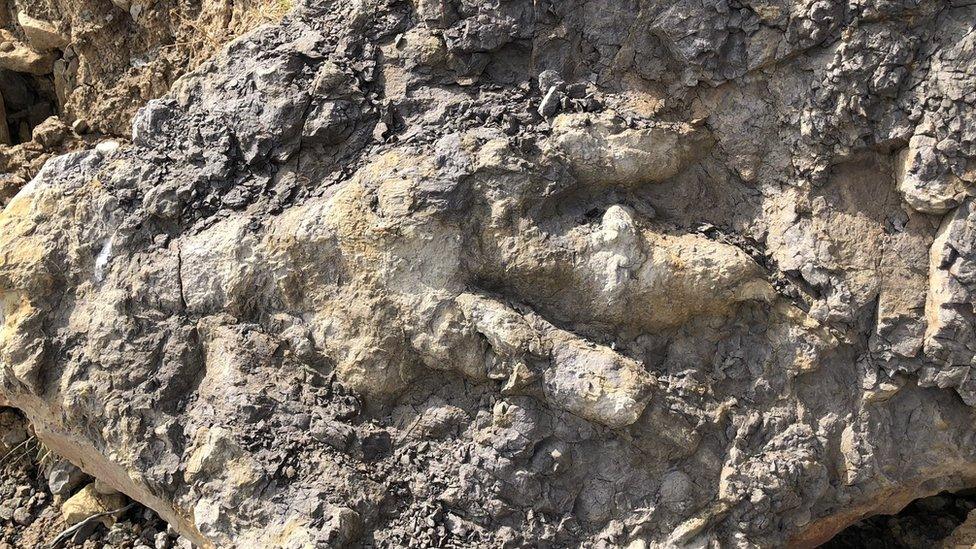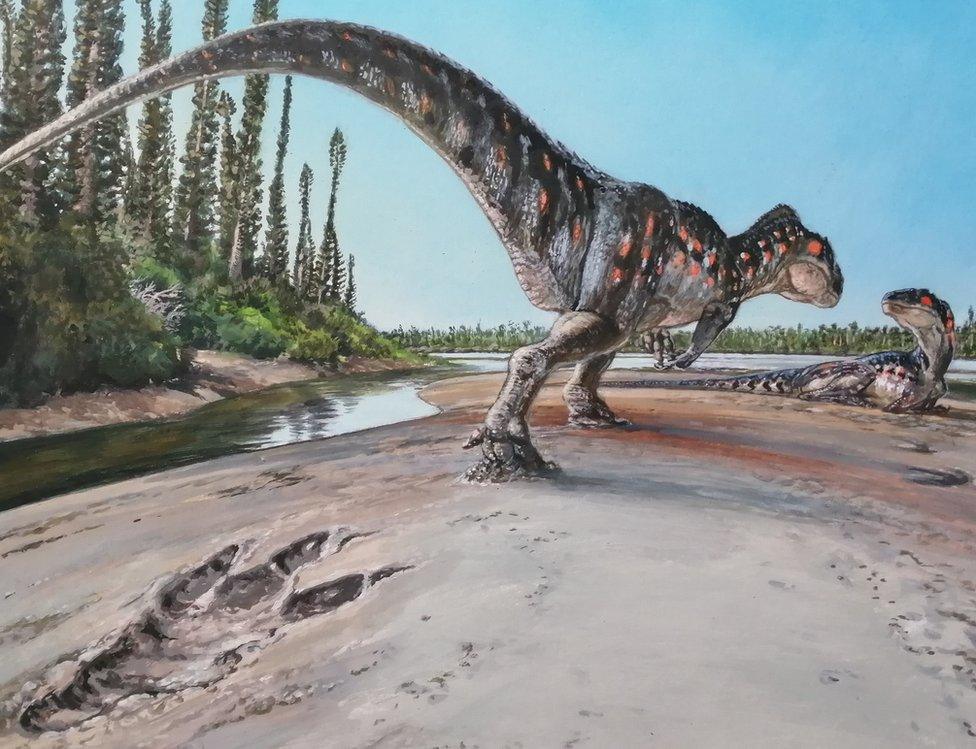Largest ever Yorkshire dinosaur print 'left by lazing giant,' researchers say
- Published

The print is the largest of its type found in Yorkshire
A record-breaking dinosaur print found on Yorkshire's coast may have been left by a predator stopping for a rest 166 million years ago, researchers believe.
Scientists said the "amazing" metre-long fossil spotted in Burniston Bay, near Scarborough, was the largest ever discovered in the region.
The team who studied the track after it was found in 2021 concluded it was made by giant carnivore like a Megalosaurus.
It is now set to go on display at the town's Rotunda Museum.
The footprint is the largest left by a theropod - a group of bipedal dinosaurs which also included Tyrannosaurus Rex - found to date in Yorkshire.
Dr Dean Lomax, a palaeontologist at the University of Manchester, said the "wonderful" discovery had shed new light on the behaviour of the carnivorous giants which once roamed the region's coast.
He added: "Features of the footprint may even suggest that this large predator was squatting down before standing up. It's fun to think this dinosaur might well have been strolling along a muddy coastal plain one lazy Sunday afternoon in the Jurassic."

The track was made by a theropod similar to a Megalosaurus
Local archaeologist Marie Woods stumbled across the print while collecting shellfish on the shore in April 2021. She said she "couldn't believe" what she was looking at.
"I had to do a double take. I have seen a few smaller prints when out with friends, but nothing like this," she added.
It later emerged a local fossil collector, Rob Taylor, had also spotted the print five months earlier when the track was not yet fully exposed.

The print was discovered by archaeologist Marie Woods while she was out collecting shellfish
A team of fossil collectors rescued the fragile print from the shoreline after scientists warned it was at risk of being lost to erosion or landslips.
Ms Woods and Mr Taylor have since donated it to Scarborough Museum and Galleries, which displays other dinosaur fossils at the Rotunda.
"Now that the specimen has been studied, plans are in motion for it to go on public display, to spark the imagination of the next generation of fossil hunters," Dr Lomax said.
Researchers' findings were published, external in the journal Proceedings of the Yorkshire Geological Society on Thursday.

Follow BBC Yorkshire on Facebook, external, Twitter, external and Instagram, external. Send your story ideas to yorkslincs.news@bbc.co.uk, external.